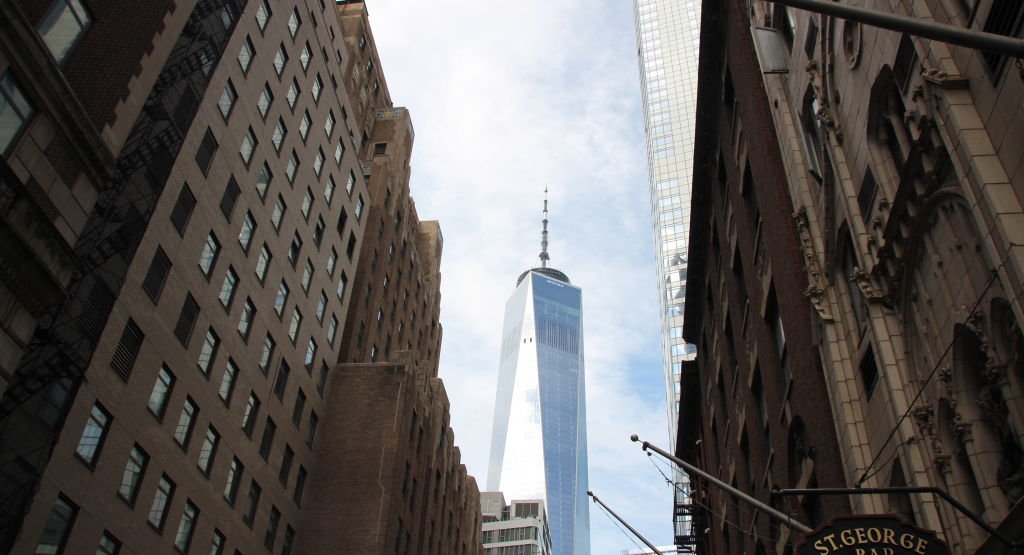Countless tours, museum exhibits, and books recount the immigrant history of the Lower East Side, from 19th century tenements to Chinatown and Little Italy. Far less attention is paid to the history of the “Lower West Side” of Manhattan, once a bustling immigrant hub and home to what historians say was the first Arabic-speaking community in the United States.
A new two-hour walking tour aims to change that.
Asad Dandia, a New York native and Museum of the City of New York tour guide, worked with local historians, preservationists and residents to unearth some of the forgotten history of the “Lower West Side” and its former “Little Syria” enclave.
“Little Syria and the Lower West Side are the quintessential examples of the stories that could be erased if people weren’t there to tell it,” Dandia said.
In the late 19th century, a wave of immigrants from Ottoman Syria — which encompasses much of modern-day Syria, Lebanon, Israel and Palestine — flocked to a roughly four-block neighborhood just south of what would become the World Trade Center.
But by the 1940s, many residents had relocated to Brooklyn, and those remaining were largely displaced by the construction of the Brooklyn-Battery Tunnel.
The central thoroughfare of what was once known as the “Syrian Quarter” — or eventually “Little Syria” — ran along Washington Street, from the Battery to Albany Street and the neighborhood’s immigrant homes radiated out onto adjacent side streets.
In “Little Syria’s” heyday, the street was bustling with men in fezzes and women in kerchiefs, local eateries sold stuffed grape leaves and kebabs, and the sound of Arabic was ubiquitous, according to historian Linda K. Jacobs.
The neighborhood was the “Mother Colony” for other Arabic-speaking communities in the country as the diaspora’s earliest and largest financial and cultural center, said Jacobs, who wrote a book on the neighborhood and whose grandparents lived there.
“We’re so happy that he’s carrying on the legacy,” Jacobs said of Dandia, adding that she and fellow “Lower West Side” tour guide Joseph Svehlak have “passed on the mantle” to him.
The first official tour is scheduled for 11 a.m. Wednesday, and tickets can be purchased through the local podcast and walking tour company The Bowery Boys. Future tours will be available through Dandia’s tour company, New York Narratives, which aims to tell lesser-known stories of immigrants and people of color in the city.
Here’s some of the highlights of the neighborhood’s history, from Dandia and other historians.
- The first Arabic-language newspaper in the United States, “Kawkab America,” was headquartered in Little Syria on Pearl Street, and founded in 1892. It was also where the Arabic Linotype machine was later created, according to the New York Public Library, “revolutionizing Arabic-language journalism throughout the world.”
- Cafes and restaurants along Washington Street – the central vein of Little Syria – were stomping grounds of the famed Lebanese-American writer and poet Kahlil Gibran and other Arab-American literary heavyweights. Gibran’s friend and fellow Lebanese-American writer, Ameen Rihani, known as the “founding father” of Arab-American literature, also lived on the street. The neighborhood’s Elizabeth H. Berger plaza will soon display a bronze mosaic sculpture honoring Gibran, Rihani and other local Arab-American writers. The public art installation will be installed next June, according to Jacobs, the historian who is also chair of the board of the Washington Street Historical Society.
- The original location of Sahadi’s, a Middle-Eastern grocery store and Brooklyn staple now on Atlantic Avenue, was opened on Washington Street in Little Syria in the 1890s. Many early Arab residents of the neighborhood began as street peddlers, hauling wooden boxes and bags on their backs, hawking small everyday wares like shoelaces and Holy Land trinkets. Merchants who saved enough money might open a storefront selling wholesale and imported goods on Washington Street, as did Abrahim Sahadi.
- In the early 1640s, the first known free Muslim settler in the U.S. bought a home on Bridge Street, close to what became Little Syria centuries later. The son of a Dutch pirate and Moorish woman, Anthony Jansen van Salee eventually acquired 200 acres of land in what would become South Brooklyn, and became one of the most prominent landowners in the Dutch New Netherland. His descendants include the Vanderbilts, Whitneys, Jacqueline “Jackie” Kennedy Onassis and Humphrey Bogart, according to PBS.
- Dandia concludes his tour at what he and local preservationists say is the last tenement remaining on former Little Syria’s central thoroughfare of Washington Street. Several more tenement buildings lined nearby blocks, where new Arab immigrants lived in squalid living conditions. Local historians and preservationists have for decades called for the landmarking of the house, along with a few other historic sites in the area.
